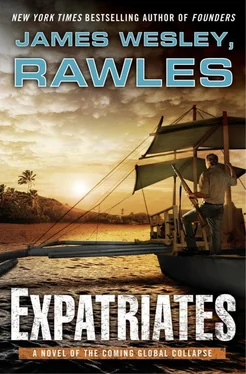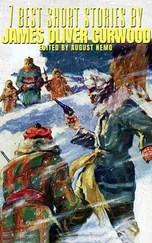The bad news for Assegaf was that his new home port would be at Manado on Sulawesi island. This port was considered the gateway to the Celebes Sea. It was 675 miles from Surabaya and more than 1,000 miles from his family’s home in Jakarta. He would have only one or two leaves each year, and undoubtedly his transport to Jakarta would be on slow and noisy C-235 or C-295 combination cargo and passenger logistics flights, with several island-hopping stops along the way.
Assegaf’s new assignment was to command KRI Sadarin. Depending on the perspective of who saw it, Sadarin could be described as either a large boat or a small ship. It was fifty-one feet long and displaced twenty-three tons when fully fueled. It was in the Hawker de Havilland Carpenteria class, powered by a pair of MTU diesels. These engines produced 1,360 horsepower and gave Sadarin a top speed of twenty-nine knots. The boat had been built in 1977, but since then it had been re-engined twice—most recently in 2010.
With its standard fuel tanks, Sadarin had a range of 950 miles at eighteen knots. A typical patrol was five days, but the frequent picket duty patrols were an agonizing fourteen days. Living for such a long stretch of time in cramped quarters and subsisting on plain, uninteresting rations often led to short tempers. Stowing extra fuel in 45-liter bladders strapped down in spare berths, extra water in crates on deck and extra provisions in every available space made the small ship seem even smaller.
The crew of Sadarin was normally ten, but for picket duty the crew had just eight men, and three of them weren’t even sailors. They were otaks (“brains”) that had been detailed from Tentara Nasional Indonesia Angkatan Udara—the Indonesian Air Force. These three men had no other duty than to stare at air-surface radar screens around the clock.
Assegaf loved the power and agility of his boat. He became famous for shouting in English the command, “Ludicrous Speed,” a quote from one of his favorite American comedy films. Seldom content with cruising Sadarin at the nominal fuel-conserving sixteen knots, he often came back into port dangerously low on fuel. Behind his back, Assegaf’s men called him either Speed Racer or Kapten Ludicrous.
In 2002, Indonesia had been forced to cede the islands of Ligitan and Sipadan (near eastern Borneo) to Malaysia by order of the International Court of Justice. This made the entire Indonesian military machine obsessed with defending their territory and exclusive waters. In particular, the Indonesian Navy had closely watched the oil-producing Ambalat region of the Celebes Sea since 2002. The frequent patrols of Sadarin were just one small part of that increased vigilance.
Even before he was given command of Sadarin , Soekirnan Assegaf had earned a reputation for being impulsive and stern in handing out reprimands to subordinates. But he was also fairly sensitive to the needs of his men while on long patrols. Unlike most other skippers of patrol boats, he encouraged his men to fish once they were well away from the port of Manado. The fresh fish supplemented their usual diet of yams, breadfruit, rice, sago, kangkung (water spinach), dried fish, krupuk crackers, canned chicken, and canned mutton.
Assegaf also allowed movies and music to be played on board, often piping songs from MP3 players directly into the ship’s speakerphone system. Both when he was a naval cadet and later in his career, he spent an inordinate portion of his pay on movies for his collection. Many of these were pirated copies that he bought on the back streets of Surabaya for only twenty thousand rupiah apiece or about two dollars each. Some of the more recently released films were muddy duplicates that had actually been surreptitiously videotaped inside Jakarta movie theaters, so occasionally they’d see the silhouette of a head popping up at the bottom of the screen, or the conversation of obnoxious movie patrons would be mixed in with the movie’s dialogue. On board Sadarin , almost every night at sea was movie night, and there was seldom a repeat. The exception was usually Maria Ozawa movies.
Assegaf’s penchant for American movies did not go unnoticed by his superiors. Without his knowledge, he was placed on a watch list by Indonesian Naval Intelligence. His personnel file was flagged by one of the more devout Muslims on the counterintelligence staff at his base headquarters. Even though Assegaf was loyal to the Jakarta government, some of his personal habits were flagged as “suspicious.” Members of his crew were questioned at intervals about his behavior, his religious practices, his preferences in entertainment, any foreign contacts, and whether or not he had made any comments about the Jakarta government, or about Indonesia’s role in the expansion campaign in the Philippines.
There was an unspoken division and preference within the Indonesian military that viewed “seculars” with suspicion, and gave promotion and assignment preference to devout Muslims. In the last few years before the global Crunch began, rapid promotion blatantly went to those who were outwardly devout carpet bowers. Indonesia’s secular constitution was sharply eroded, most noticeably starting in 2003 when Sharia law was recognized in Aceh province. This process started to spread in the early 2010s, and by the time of the Crunch, it went into high gear. The increasingly muzzled Indonesian press at first called this Acehinization but later more discreetly called it “moderation of morals” or “return to devout values.”
Acehinization flew in the face of the nation’s tradition of Pancasila state ideology, which had asserted that Indonesia would recognize multiple religions but be secularly governed. Most recently, under legislation spearheaded by the Islamic Defenders Front (FPI) and the Justice Welfare Party (PKS), kissing in public had been banned, as well as “lascivious clothing.” To some clerics, the new dress code was interpreted as head-to-toe coverage for women, even in Indonesia’s sweltering climate. All of these steps were heralded as “defense against Western decadence.”
The PKS, which was directly patterned after the Muslim Brotherhood, began to assert more and more control over all the branches of the Indonesian military. Non-Muslims were increasingly marginalized and sometimes targeted for malicious rumors, “morals investigations,” and negative efficiency reports.
Indonesia’s population of 225 million included 197 million Muslims. Kapten Assegaf was one of the many who were “Muslim in name only.” In the eyes of the new Acehinated Navy, his stance was not career enhancing. In the new Indonesia, the radical imams had slowly been putting a theocracy in place for more than a decade. Most of Assegaf’s contemporaries saw it as inevitable. Some of the more radicalized ones who were PKS members actually embraced the change. The dissenting “decadent” minority started derisively calling the fundamentalists the Jerks of Java.
In the early 2000s, the Laskar Jihad, led by Ja’far Umar Thalib was in the media spotlight. These jihadis were directly influenced by modern Saudi Wahhabism. After a couple of years, Laskar Jihad appeared to die out. In actuality, it went underground, burrowing into many government ministries in Indonesia and Malaysia. The jihadis eventually gained control of every branch of government, including the armed forces. The culmination came with the seating of the new president, just before the Crunch. His green lapel pin told the world that the radical Islamists controlled every apparatus of the government, from top to bottom. The Reformasi (Reformation) era had ended and the Sarip era—the era of the theocrats—had begun. They had completed their silent coup with little more than whispers of dissent in the heavily state-controlled press.
Читать дальше












